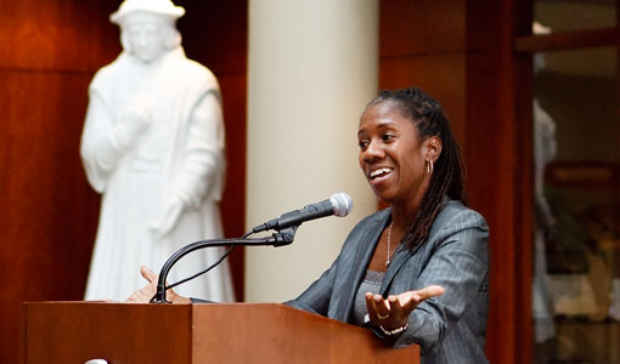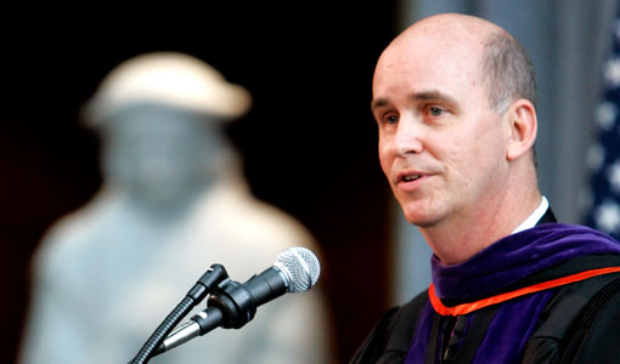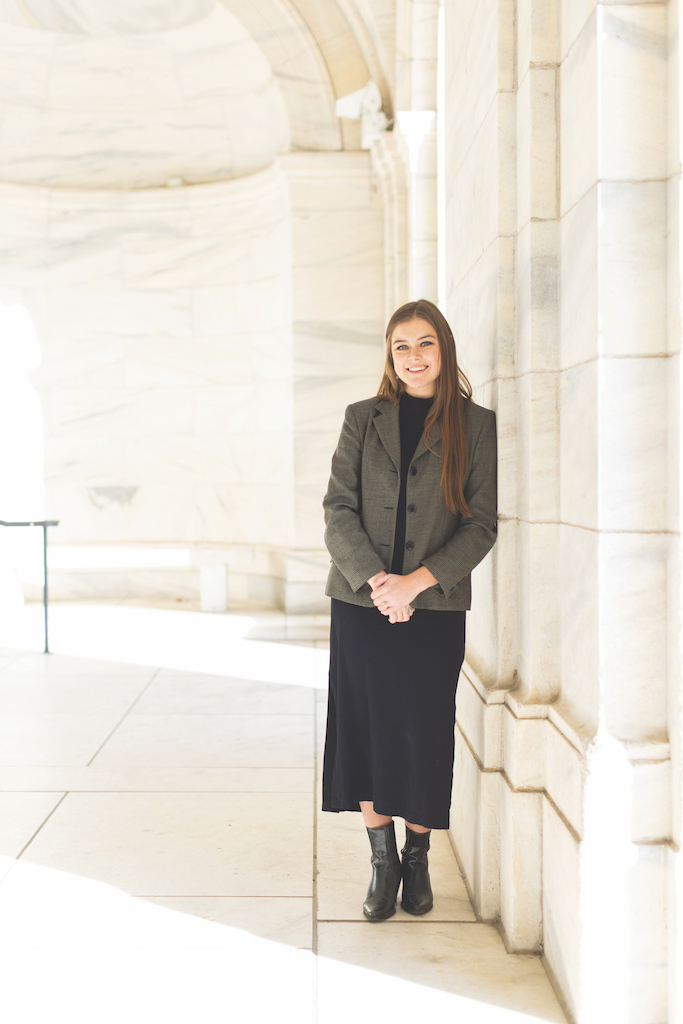My scholarly work over the past 15 years has focused principally on exploring the issue of racial diversity on the bench. When I first started writing about the importance of diversity on the bench, a number of state task forces had just concluded studies, documenting the continued existence of racial and gender bias in our nation’s state court systems. These reports provided the impetus for organized efforts to improve racial and gender diversity on the bench.
The work of achieving greater racial diversity on the bench has been slow and hard. On the federal bench in particular there have been a number of contentious battles surrounding efforts to bring greater racial diversity to the bench.
For years, I, along with many others, publicly supported efforts to finally integrate the 4th Circuit Court of Appeals, which covers Maryland, Virginia, South Carolina, North Carolina and West Virginia. Although the population of this district was 22 percent African American – the highest African-American population of any federal circuit – there never had been an African-American judge on the 4th Circuit.
President Bill Clinton set about remedying this by nominating no fewer than three distinguished African-American judges to the 4th Circuit, two from North Carolina and one from Maryland. Blocked by then North Carolina Sen. Jesse Helms, none ever received a hearing. Finally, on his way out of office, Clinton named Virginian Roger Gregory as a recess appointment. Judge Gregory was nominated by President George W. Bush and then confirmed by the Senate. Bush later appointed Allyson Duncan, a North Carolina lawyer as the first black woman to sit on the 4th Circuit. She was confirmed without controversy.
I also have focused on the issue of judicial elections, especially after Republican Party of Minnesota v. White,1 the case in which the Supreme Court struck down Minnesota’s canon that prevented judicial candidates from “announcing” their views on contested legal issues. Because I began my career as a civil rights lawyer challenging judicial election systems that denied the ability of African-American voters in counties in southern states to elect their candidates of choice to the bench, I am intimately familiar with the ways that race can infect judicial campaign contests. I worried that the removal of judicial candidate speech restrictions by states after the Supreme Court’s decision in the White case would further disadvantage black judicial incumbents, who might be subject to thinly veiled racial appeals by challengers.
I confess that I had largely come to believe that gender diversity on the bench was well on its way. And so I was rather surprised to learn about the Infinity Project (see article on Page 17) and that only one woman, the great Judge Diana Murphy, had ever been appointed to the 8th Circuit Court of Appeals. Murphy, who was appointed to the court in 1994, continues to serve with tremendous distinction. My first thought was: Is this an 8th Circuit thing? So I did a little research.
I learned that, rather than an idiosyncratic 8th Circuit problem, the figures for women serving on our federal Court of Appeals are, across the board, shockingly low. The 8th Circuit has the worst record for gender diversity among all federal circuits.2 But even those circuits with the greatest number of women judges – the 5th and 6th Circuits (with six women judges each) and the 9th Circuit (with seven women judges) – do not even begin to approach numbers that reflect the percentage of women in the population or even in the profession. And those figures only become more disturbing when placed in context. For example, although the 9th Circuit has seven women judges, it is also the federal circuit with the largest total number of judges overall (28). This makes the fact that seven of its judges are women considerably less impressive.
So, how did this happen? Certainly some of us (me included, I confess) took our eyes off the ball. Achieving greater diversity on the bench requires constant attention and vigilance to both the issues of race and gender, and to the federal and state courts. More importantly, we need to be attentive to the issue of gender diversity in the pipeline to the bench. This means we need to examine how women fare in the areas in the profession from which women are drawn. The percentage of women on state courts remains stuck between 25 and 30 percent nationwide3 – not an appalling figure, but certainly not reflective of the percentage of women in the profession. Likewise, 25 percent of federal district court judges are women. There are bright spots, however. Almost 36 percent of chief justices of state high courts are women.4 Why are those women not making the transition to federal courts of appeals?
It may be that we’ve failed to be attentive to the issue of continuing gender inequity throughout the profession. Although women constitute nearly 50 percent of law school students and 50 percent of associates at law firms, at partnership something changes. Only 16 percent of equity partners at major law firms are women. And women equity partners make, on average, $90,000 less than their male counterparts.
Women go to part-time work at law firms more readily than men, mostly to care for young children and elderly parents. One in eight women at law firms works part time, compared to one in 50 men.6 So, women who work part time tend to do so during the prime earning period of their lives. Men who work part time at law firms tend to do so at the end of their careers, as a form of semiretirement.
Finally, and I think most importantly, we’ve stopped talking forcefully about the value of gender diversity to judicial decision making. I’ve tried in my writing to talk not only about the way that increasing racial diversity among our nation’s judges provides important role models and increases public confidence in the judiciary. I’ve tried to make the case that minority judges bring to the bench experiences and viewpoints that can enrich and deepen the scope of judicial decision making. The same is true of gender diversity. We must not be reticent about identifying the very concrete ways in which the experiences and perspectives of women can enhance and deepen the judicial decision making. The Supreme Court said that to exclude African Americans from jury venires, “is to remove from the jury room qualities of human nature and varieties of human experience, the range of which is unknown and perhaps unknowable.”7 Just as jury decision making is impoverished by the exclusion of varied experiences and perspectives, so too is judicial decision making impoverished by the exclusion of women, whose unique experiences and viewpoints can deepen a court’s understanding of how the law works in the lives of women, their families and their communities.
Earlier this year I had the privilege of sitting on a panel with Justice Ruth Bader Ginsburg at the National Constitution Center in Philadelphia. The panel was titled “Women and the Law.” Justice Ginsburg spoke eloquently about her dissent in the case of Ledbetter v. Goodyear Tire & Rubber Co.8 In that case, a majority of the justices held that Mrs. Ledbetter’s claim of gender-based pay discrimination was time-barred, reading Title VII of the Civil Rights Act to essentially immunize employers for past gender-based pay discrimination, by restarting the clock each time a new (discriminatory) paycheck is issued to a female employee. If, as in Ledbetter’s case, the female employee does not learn of the pay inequity until years after it began, she will be unable to recover for the earlier time period. In her dissent, Ginsburg explained why a woman working as a supervisor in a male-dominated environment could be unaware that her salary was substantially below that of her male colleagues. Ginsburg took the unusual step of reading her dissent from the bench. It was a rare and powerful moment – the only woman on the nation’s highest court speaking to the reality of gender-based workplace discrimination. The late Justice Thurgood Marshall performed a similar function as the nation’s first African American Supreme Court justice. In a tribute to Justice Marshall following his retirement, Justice Byron White wrote that Marshall would “tell us things we know but would rather forget; and he told us much that we did not know due to the limitations of our own experience.”9 This is the real value of diversity on the bench. We must reinvigorate our advocacy to reflect and advance, first and foremost, the way in which diversity on the bench enhances the quality and breadth of judicial decisionmaking.
I’m delighted to see this outpouring of support for the Infinity Project. It will not surprise me to see “Infinity” chapters forming throughout the country. Indeed, I encourage you in your work to reach out beyond the states of the 8th Circuit, to share your plans and initiatives with others committed to the development of a diverse judiciary.
Author: Sherrilyn A. Ifill is a professor at the University of Maryland School of Law who has written extensively about the importance of diversity on the bench. She visited the St. Thomas School of Law in October to discuss “Leadership, Gender and Judicial Selection” at a program co-sponsored by the School of Law, the Thomas E. Holloran Center for Ethical Leadership in the Professions and the Infinity Project.
Read more from St. Thomas Lawyer.





